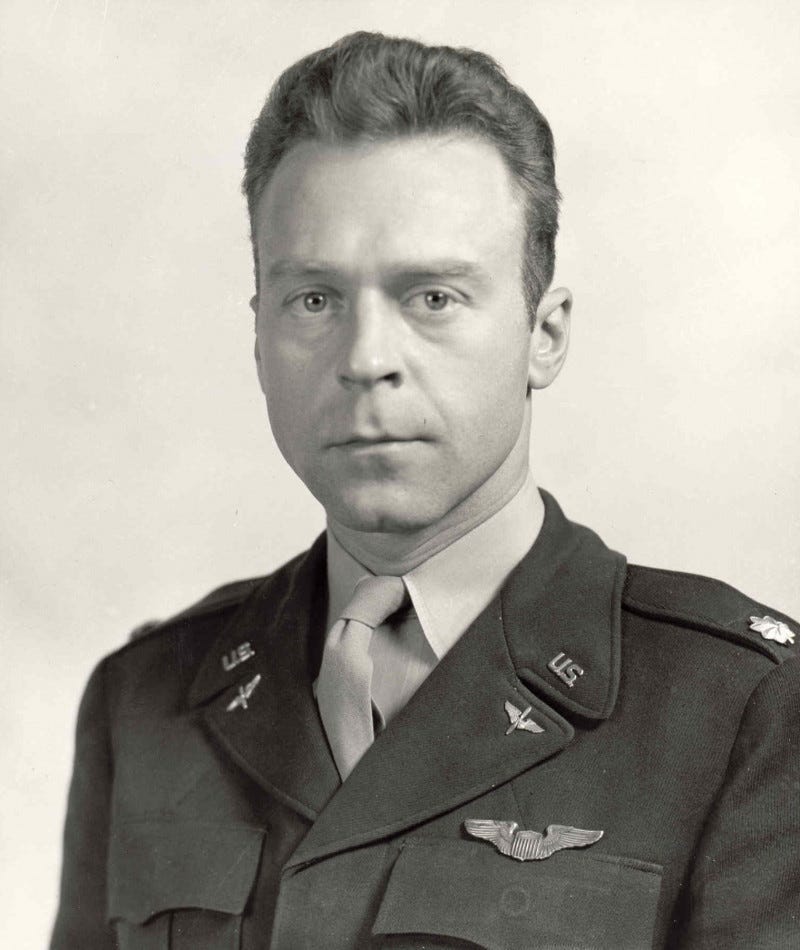Medal of Honor Monday: Louis J. Sebille
The first member of the Air Force to receive the Medal.
On this day in 1950, an Air Force pilot engages in an action that would earn him the Medal of Honor. Major Louis J. Sebille was the first member of the Air Force to receive the Medal.
The Air Force was still relatively new in those days. During World War II, pilots served in the U.S. Army Air Forces instead. Sebille had been among those pilots who served with the Army in World War II, but then returned to serve in the Air Force during the Korean War.
Sebille flew 68 missions during World War II, and he logged 245 combat hours. He earned two Distinguished Flying Crosses and twelve Air Medals.
By the summer of 1950, Sebille was serving his country again. This time, he was an Air Force officer commanding the 67th Fighter-Bomber Squadron, 18th Fighter-Bomber Group, 5th Air Force
On the morning of August 5, Sebille and his small formation of F-51 Mustangs were ordered to attack a camouflaged area which contained a large number of enemy troops, artillery, and armored vehicles. The enemy was a threat to nearby friendly troops.
“It was a close air support strike against enemy targets in Southern Korea,” Captain Martin Johnson later wrote. “It was a grand day for flying when our four F-51 Mustangs took off about two that afternoon.”
Unfortunately, Sebille’s wingman had to go back almost immediately because of a mechanical problem. The three remaining F-51s kept going.
As the three planes passed over the enemy targets, Sebille attempted to drop both of the 500-pound bombs that he was carrying. He succeeded with one, but the other simply would not budge. Nevertheless, the three planes began strafing the enemy with gun fire and rockets.
The Americans were soon taking return fire from the ground. Sebille was hit.
Johnson could see that Sebille was losing engine coolant. The Major’s F-51 was badly injured, and it didn’t seem that the plane would be able to stay airborne for much longer. Johnson warned his friend to get out of there and to make a run for friendly territory.
But Sebille refused. He wanted a second chance to use his remaining bomb. “I’ll never be able to make it back,” Sebille told Johnson. “I’m going to get that b*stard.” He could have bailed out and tried to escape, but Sebille apparently never considered that a serious option. Instead, he was determined, as his citation concludes, “to inflict maximum damage upon the enemy.”
Which is exactly what he did. Sebille flew his plane directly into enemy gun batteries. Both the plane and the targets exploded as Johnson watched.
“[W]e had lost a remarkable friend, a fine commander and a very brave man,” Johnson concluded.
Sebille’s widow and his 19-month-old son would receive a Medal of Honor on his behalf just over a year later. They received the Army version of the Medal because the Air Force wouldn’t have its own Medal until 1965.
Another member of the Greatest Generation who sacrificed during World War II—but then came back to give even more when his country asked for it.
Rest in peace, Major Sebille.
Sources can always be found on my website, here.





This heroes story is new to me. Being a USAF veteran, you would have thought it would have been covered in Leadership classes (maybe it was and I forgot). Service above self was our moto and he took it to the enemy that day. Thank you Tara.
I'll always wonder how a wife and child survive this! If a man can be deemed worthy to assist, he must truly be considered a hero as well.